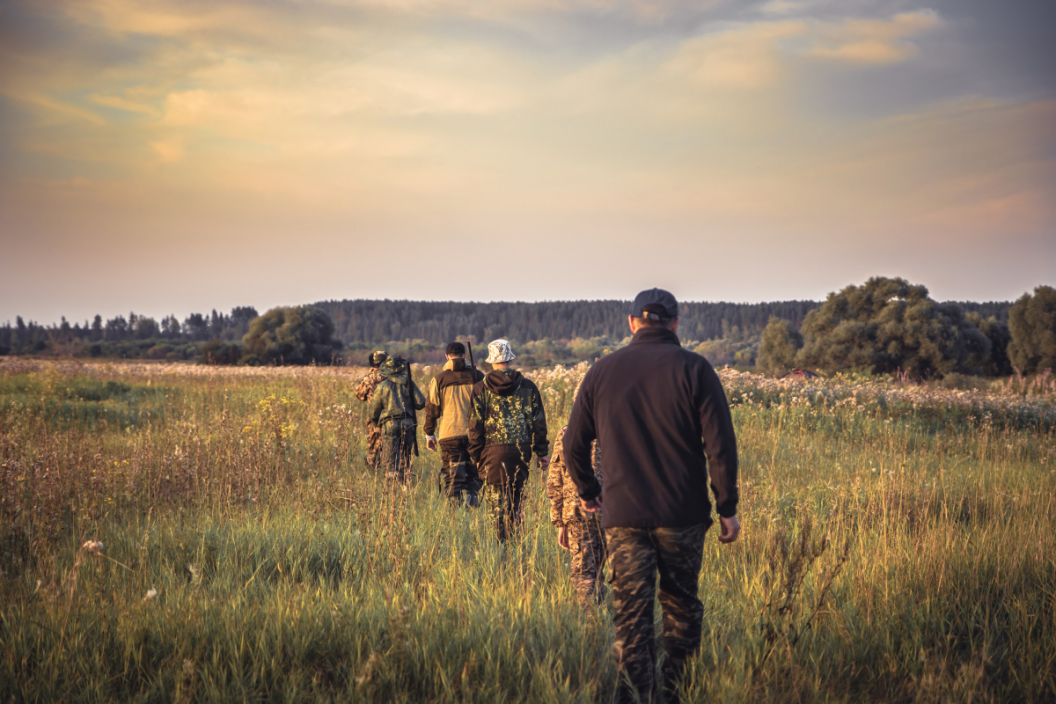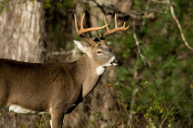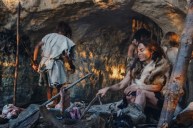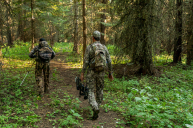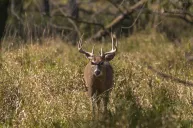In November 2021, Avery Toledo, a Puerto Rican man from Queens, New York, found himself in a hunting blind. Armed with a crossbow, he was quietly waiting for a buck to come within shooting range. Surrounded by the sounds of the forest-the birds, the wind, the squirrels-he watched the sky fade through pinks and purples as the sun rose through the trees.
Suddenly he saw a flash of brown at 70 yards. It was a buck chasing a doe. They passed quickly and too far out of range.
Although he could not shoot, that moment was still years in the making: Toledo grew up bonding with his dad while fishing the Broad Channel. "It was an unspoken dream of ours to go hunting," he tells Wide Open Spaces. Though his father died before the two could go together, Toledo says, "I've always had a desire to go hunting. It's a feeling that just grew."
The day Toledo saw the buck chasing the doe was during a Hunters of Color event in upstate New York, where nontraditional hunters were introduced to crossbow hunting for whitetail deer.
The past few years has seen a new wave of sportsmen like Toledo—those who historically haven't been taught to string a bow as a kid or who haven't always felt welcome at the blind. More hunters of color, women hunters, and those who were raised in cities instead of heritage country-folk are heading into the wild forests in search of game...and something more.
With a fresh perspective and zest for the sport, new hunters are ushering in the next golden era of American hunting and shooting sports.
What the New Era of Hunters Looks Like
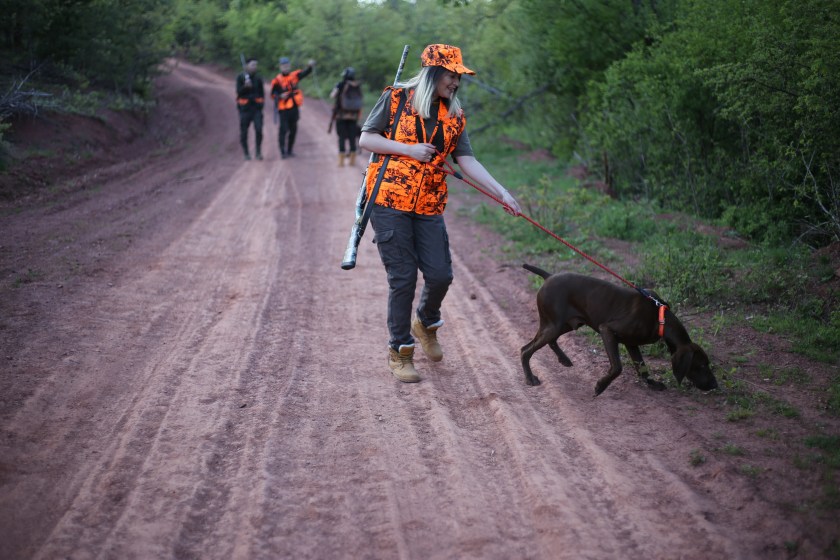
Getty Images, NSimages
It's no secret hunting has traditionally been a sport dominated by white men. The last National Survey of Fishing, Hunting and Wildlife-Associated Recreation reported that more than 90% of hunters were Caucasian and more than 70% were male. That's largely because most of us learn to hunt from our familial elders—typically the male hunters of a family teach their younger male kin, passing their knowledge down to future generations.
Of course, there's nothing wrong with this tradition, but it does limit who is among the next generation of hunters.
While statistically, hunting is still dominated by white men, the tides are starting to shift toward more diversity: Recent data from Responsive Management suggests more women want to hunt, and overall, there are approximately 5 million active women hunters in the U.S.
Moreover, a huge study in 2021 from researchers at the North Carolina State University and state wildlife agencies surveyed more than 17,000 students at public universities across 22 states on the topic of hunting. The people who checked the box as current hunters did indeed fit the historical, statistical expectation of being white and male.
But those who reported they were interested in learning to hunt were much more diverse. In fact, this group—labeled "potential hunters" in the study—looked a lot more like the general population of the United States: 38% identified as either Black or African American, Hispanic or Latinx, Asian, Native American, or another non-white race, and 43% came from urban backgrounds.
The survey showed that potential hunters were more likely to be from a racial or ethnic minority compared to active hunters. They were also more likely to be female.
This means that if potential hunters follow through on their interests and pursue hunting, the figurative hunting landscape may look different—and sooner than you may think.
Recent market trend numbers from the NSSF reports that first-time firearm ownership is shifting, too. Those purchasing firearms for the first time are not only more diverse, but they are also younger. In the past three years there have been 18 million first-time gun owners. Of those, 54% are under 40 and 31 are female. Additionally, retailers are reporting an increase in customer diversity, with a 37% increase of African American buyers, a 35% increase in Hispanic/Latino buyers, and a 28% increase in Asian buyers.
Another notable shift is the increase in firearm ownership among people that identify as Democrats, which nearly doubled since 2020.
Obviously all of these firearm sales are not solely aspiring hunters, and we can assume some are just for reassurance of safety and self-defense. But certainly one of the first steps to learning to hunt as an adult is buying and becoming comfortable with a rifle.
The Future of Hunting
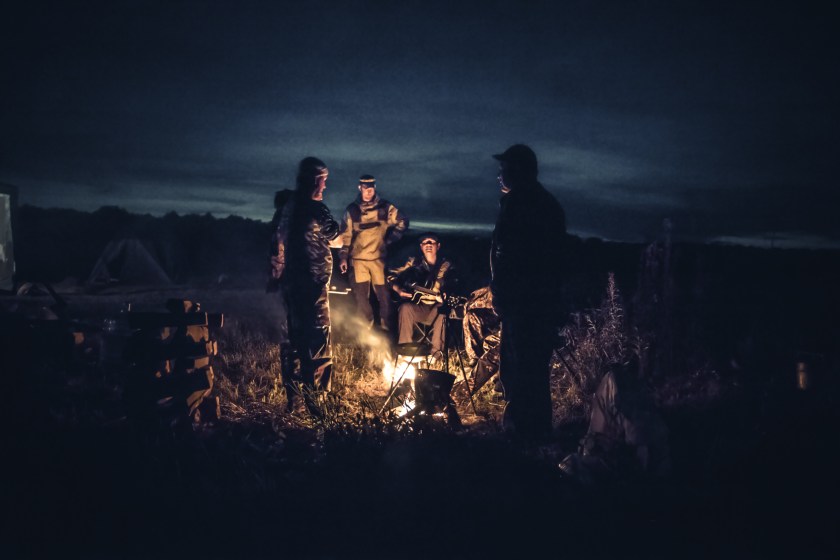
Getty Images, splendens
Organizations like Hunters of Color, Diversify Outdoors, Uncharted Outdoorswomen, LGBT Outdoors, and many more are working to dismantle barriers that have kept minorities in the hunting community on the outside looking in for generations.
That work is already changing lives: When he was growing up in Queens, Toledo had always felt drawn to the outdoors, but didn't see a way to pursue it. But his and his father's dream to go hunting persisted and blossomed—for many reasons, including the field-to-fork appeal, the development of a specific skill set, being a steward of the land, contributing to conservation, acknowledging wild connections, and being part of the natural life cycle.
"There is a primal feeling inside, I'll say as a man who lives a very hustle-and-bustle life, there is something that is very instinctual, very primal, that I wanted to get in touch with," Toledo said.
This shift in hunting demographics could be the key to long term stabilization of hunting and shooting sports which for many years pre-pandemic were on a steep decline. These trends are taking place against that backdrop of a long-term decline in hunting but at the same time, a dramatic increase in shooting participation and gun purchasing.
This rush of new hunters could provide balance to a shifting industry.
Hunting participation in America peaked in the 1980s when nearly 17 million hunters were purchasing licenses. The latest five-year report released in 2021 from the U.S. Fish and Wildlife Service reported 11.5 million hunters. The current population of the United States is 326.7 million people. Hunting participation has dwindled to around 3.5% of the national population.
Fewer hunters equal fewer finds for conservation efforts. The key to long term stabilization is retention of nontraditional hunters.
While it is still too early to see what the pandemic boost and the work of the previously mentioned organizations have done to hunting demographics in the United States, anecdotally at least, the next phase of American hunting will be more diverse and inclusive. People from diverse backgrounds and mindsets engaging in hunting have the potential to create a golden era of hunting that is vibrant and robust - with space for all.
